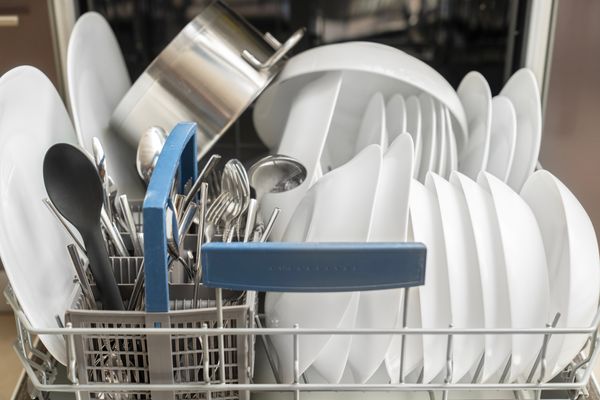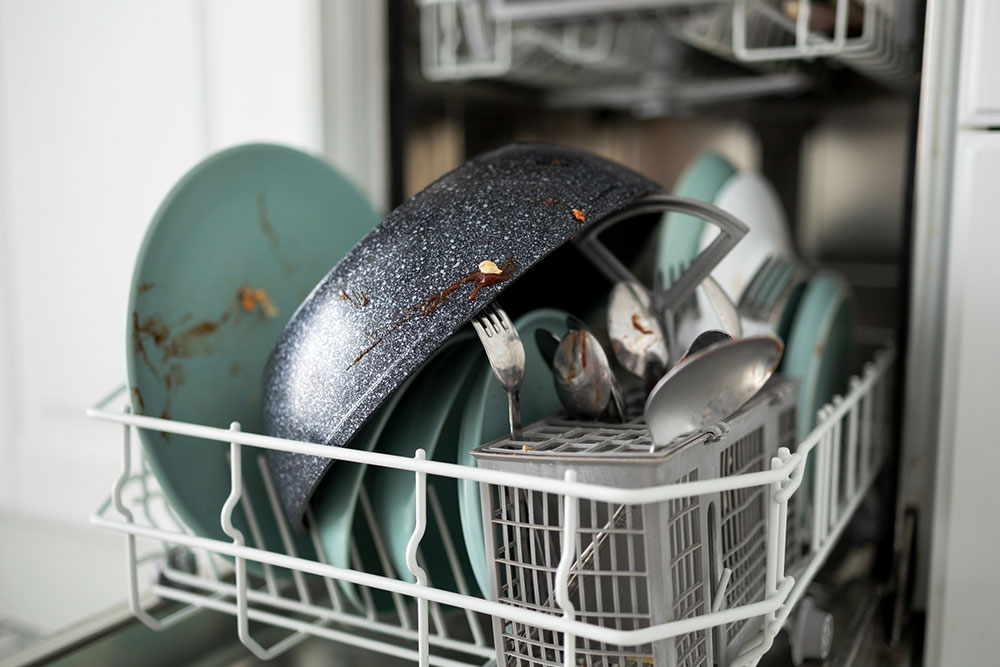Is your Viking dishwasher leaving your dishes wet and frustrating you every time? You rely on it to save time and effort, but when it doesn’t dry properly, it can feel like a big setback.
You’re not alone—many Viking dishwasher owners face this exact issue. The good news is, you don’t have to live with soggy dishes or guess what’s wrong. You’ll discover simple, practical solutions to fix your Viking dishwasher not drying. Keep reading, and you’ll be able to enjoy spotless, dry dishes again—without calling a costly repair service.

Credit: www.reddit.com
Common Causes Of Poor Drying
Poor drying in a Viking dishwasher can be frustrating. Many factors cause dishes to stay wet after a cycle. Understanding these common reasons helps fix the problem quickly. Some issues involve parts, while others relate to how you use the dishwasher.
Heating Element Issues
The heating element warms the air inside the dishwasher. It helps water evaporate from your dishes. A broken or faulty heating element stops this process. Without heat, dishes remain wet and spotty. Check for visible damage or test the element with a multimeter. Replace the element if it shows no electrical continuity.
Clogged Vent Or Fan
The vent and fan remove moist air during drying. Dirt, food, or grease can clog the vent. This blockage traps steam inside the dishwasher. As a result, dishes do not dry well. Clean the vent area with a soft brush. Make sure the fan spins freely without obstruction.
Detergent And Rinse Aid Problems
Using the wrong detergent affects drying performance. Harsh or old detergent can leave residues on dishes. Rinse aid helps water sheet off dishes and dry faster. Without rinse aid, water forms droplets that take longer to evaporate. Always use the recommended detergent and fill the rinse aid dispenser.
Loading And Rack Placement
How you load dishes affects air circulation. Overloading or blocking the spray arms reduces drying efficiency. Place items with space between them for better airflow. Avoid nesting bowls or stacking cups too closely. Proper rack placement ensures heat and steam reach every dish.
Simple Troubleshooting Steps
Simple troubleshooting steps can help fix a Viking dishwasher that is not drying properly. These steps are easy to follow and do not require special tools. Check each part carefully to find the cause of the problem. Small fixes often solve the issue quickly.
Check And Clean Filters
Dirty filters block water and air flow inside the dishwasher. Remove the filters and rinse them under running water. Use a soft brush to clear any stuck debris. Clean filters improve drying and washing performance.
Inspect And Test Heating Element
The heating element helps dry dishes by warming the air. Look for signs of damage or burn marks on the element. Use a multimeter to test if the element has continuity. Replace the heating element if it is broken or faulty.
Use Quality Rinse Aid
Rinse aid helps water slide off dishes faster, aiding drying. Check the rinse aid dispenser and refill it with a good brand. Low or no rinse aid can cause wet dishes after a cycle.
Adjust Rack Positioning
Improper rack placement blocks air circulation and water drainage. Make sure dishes do not block the spray arms. Arrange items so air flows freely around them. Correct rack positioning helps dishes dry evenly.
Maintenance Tips To Improve Drying
Keeping your Viking dishwasher drying well needs regular care. Small steps can help the drying process work better. These tips help your dishes come out dry and clean every time.
Regular Cleaning Schedule
Clean the dishwasher filter at least once a month. Remove food bits and debris to keep water flowing well. Wipe down the door seals and spray arms too. This stops clogs and improves drying.
Avoid Overloading
Do not put too many dishes inside. Overloading blocks air and water movement. Space out plates, cups, and utensils for better drying. Give each item room to dry well.
Use Correct Detergent
Choose a detergent made for dishwashers. Avoid using hand soap or regular soap. Proper detergent helps break down grease and dries dishes faster. Check that detergent matches your water type.
Run Hot Water Before Starting
Run hot water in the sink before starting the dishwasher. Hot water helps the dishwasher reach the right temperature faster. This makes drying more effective and saves energy.

Credit: www.donsappliances.com
When To Call A Technician
Sometimes, fixing your Viking dishwasher yourself is not enough. Calling a technician can save time and prevent more damage. Knowing when to call a professional helps keep your dishwasher working well and your dishes clean and dry.
Persistent Heating Element Failure
The heating element warms the dishwasher to dry dishes. If it fails repeatedly, drying stops working. A technician can test and replace the heating element safely. Don’t ignore this issue. It can cause water to stay inside the dishwasher.
Electrical Or Control Board Issues
Dishwashers have control boards that manage all functions. Electrical problems can stop drying cycles from starting. A technician has tools to diagnose control board failures. They can repair or replace parts to restore drying functions. Electrical issues can be tricky and unsafe to fix alone.
Ventilation System Repairs
The ventilation system removes steam and moisture during drying. If vents get blocked or broken, drying fails. A technician checks and clears vents or fixes broken parts. Proper ventilation is key for drying dishes completely. Without expert help, you might miss hidden problems in the system.

Credit: appliancecowboys.com
Frequently Asked Questions
Why Is My Viking Dishwasher Not Drying Dishes Properly?
A common cause is the rinse aid dispenser being empty or clogged. Check and refill it.
How Can I Fix Viking Dishwasher Drying Issues Quickly?
Clean the dishwasher filter and spray arms. These parts affect water drainage and drying.
Does Using The Wrong Cycle Affect Drying On Viking Dishwashers?
Yes, some cycles use less heat or skip drying to save energy. Choose a heated dry cycle.
Can Low Water Temperature Cause Poor Drying In Viking Dishwashers?
Yes, water below 120°F can reduce drying efficiency. Ensure your water heater is set correctly.
Should I Call A Technician If My Viking Dishwasher Still Won’t Dry?
Call a professional if cleaning and settings don’t help. It may need repair or part replacement.
Conclusion
A Viking dishwasher not drying can cause frustration. Checking the heating element and vent helps solve this. Clean filters and proper loading improve drying results. Small fixes often restore your dishwasher’s function quickly. Regular care keeps dishes dry and your machine working well.
Keep these tips in mind for better drying every time. Don’t let damp dishes slow you down. Simple steps bring back the dry finish you expect.
